What Is a Broken Link?
A broken link is a hyperlink that points to a page or resource on the Internet that no longer exists. For this reason, it's sometimes called a 'dead link'.
There are two types of broken links. The first type is links pointing from one webpage to another on the same domain (i.e., internal links). The second type is links pointing from one domain to another (i.e., external links).
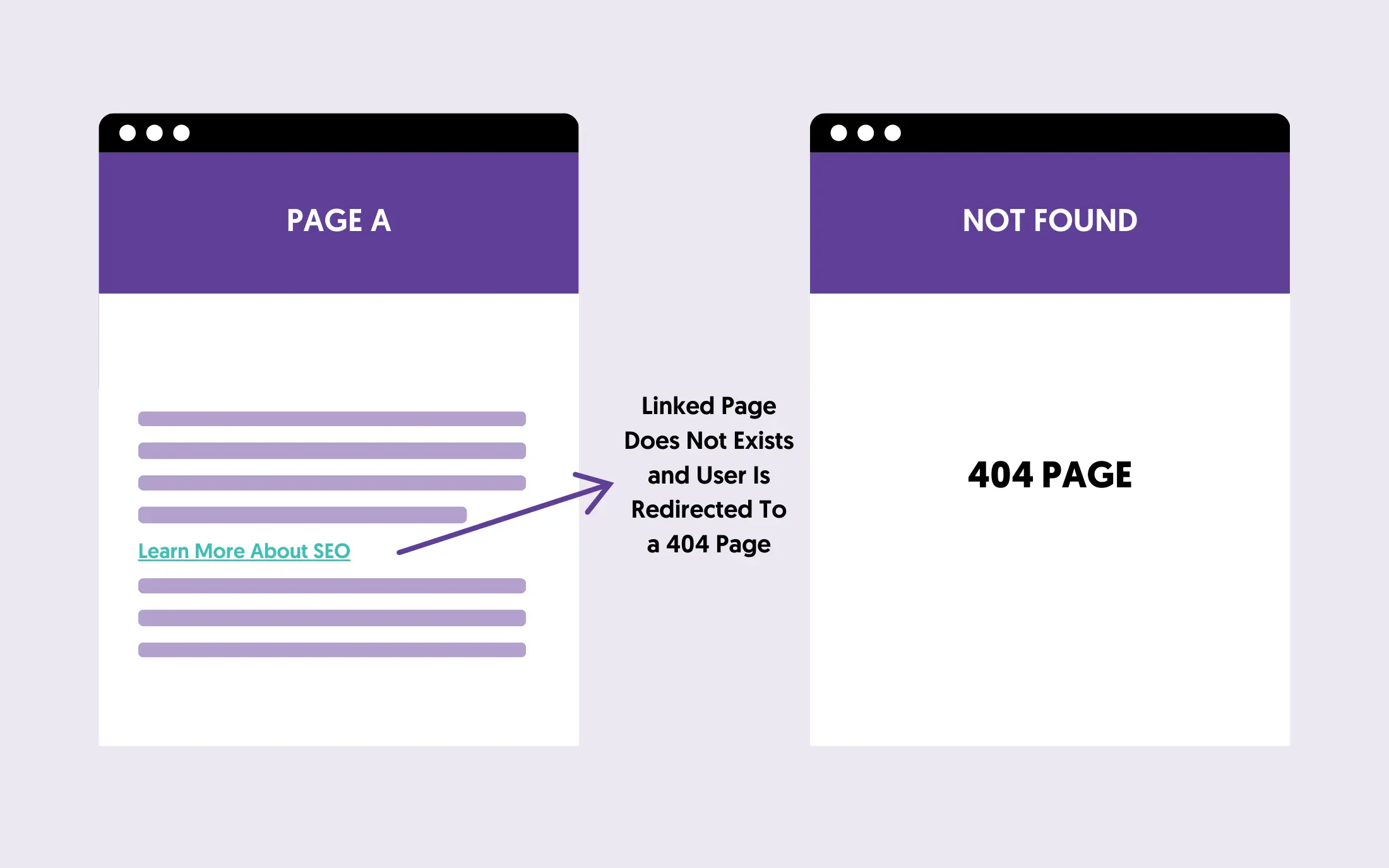
A broken link occurs because the page pointed to by the link has ceased to exist, resulting in a 404 (Not Found) message.
Are Broken Links Harmful For SEO?
Broken links don't directly affect your SEO rankings. A few broken links on a page won't affect its ability to rank, but they are bad for the user experience.
Too many broken links on a website frustrate users who click on them, and they may leave your site quickly, increasing your bounce rate. Search engines view high bounce rates as a signal that your site may not provide valuable content, which can lower your rankings.
In addition, if search engines detect too many broken links on a website, they will index it less often and consider it low-quality.
How To Find And Fix Broken Links?
As mentioned above, there are different kinds of broken links: links pointing to pages within your website (internal links), links pointing to pages outside your website (outbound links), and incoming links from other websites to your website (inbound links).
Let's look at the tools and methods to find and fix all the broken links.
1. How To Find And Fix Internal Links
There are many free tools for scanning your website for broken internal links. One is the Deal Link Checker, which is free and easy to use.
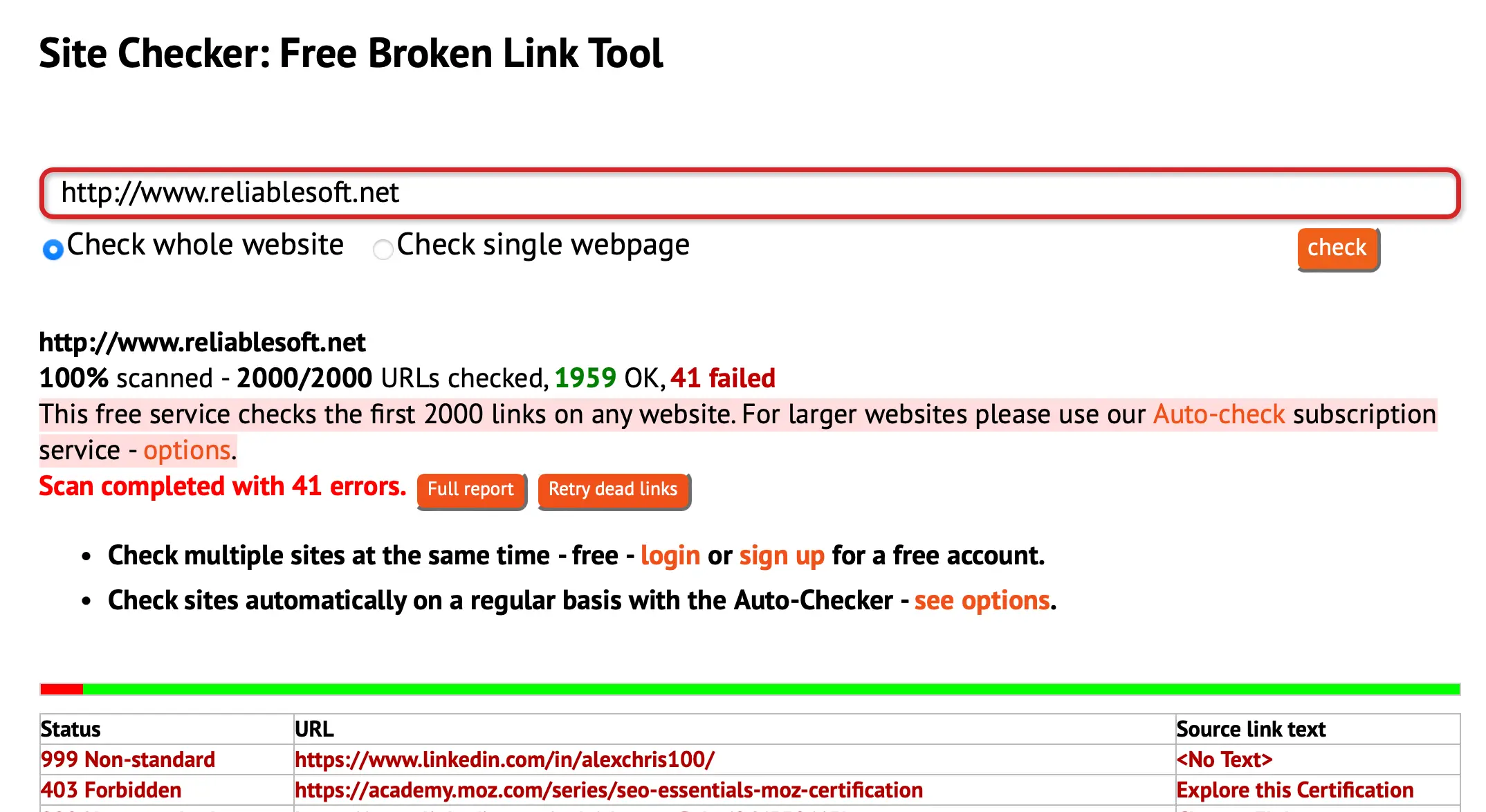
Enter your domain name in the SEARCH box and click the CHECK button.
The tool will scan your website and give you a report. Look for the "404 Not Found" status to find which links are broken.
Keep in mind that the tool will report both internal and external links. To differentiate them, look at the URL column. Internal links will include URLs within your domain.
Other alternative tools you can use:
Broken link checker plugin - This is the best free option for WordPress users.
Semrush Site Audit—This tool is free and does more than check for broken links, but requires registration. The nice thing is that it groups broken links into different categories, making them easier to find and fix.
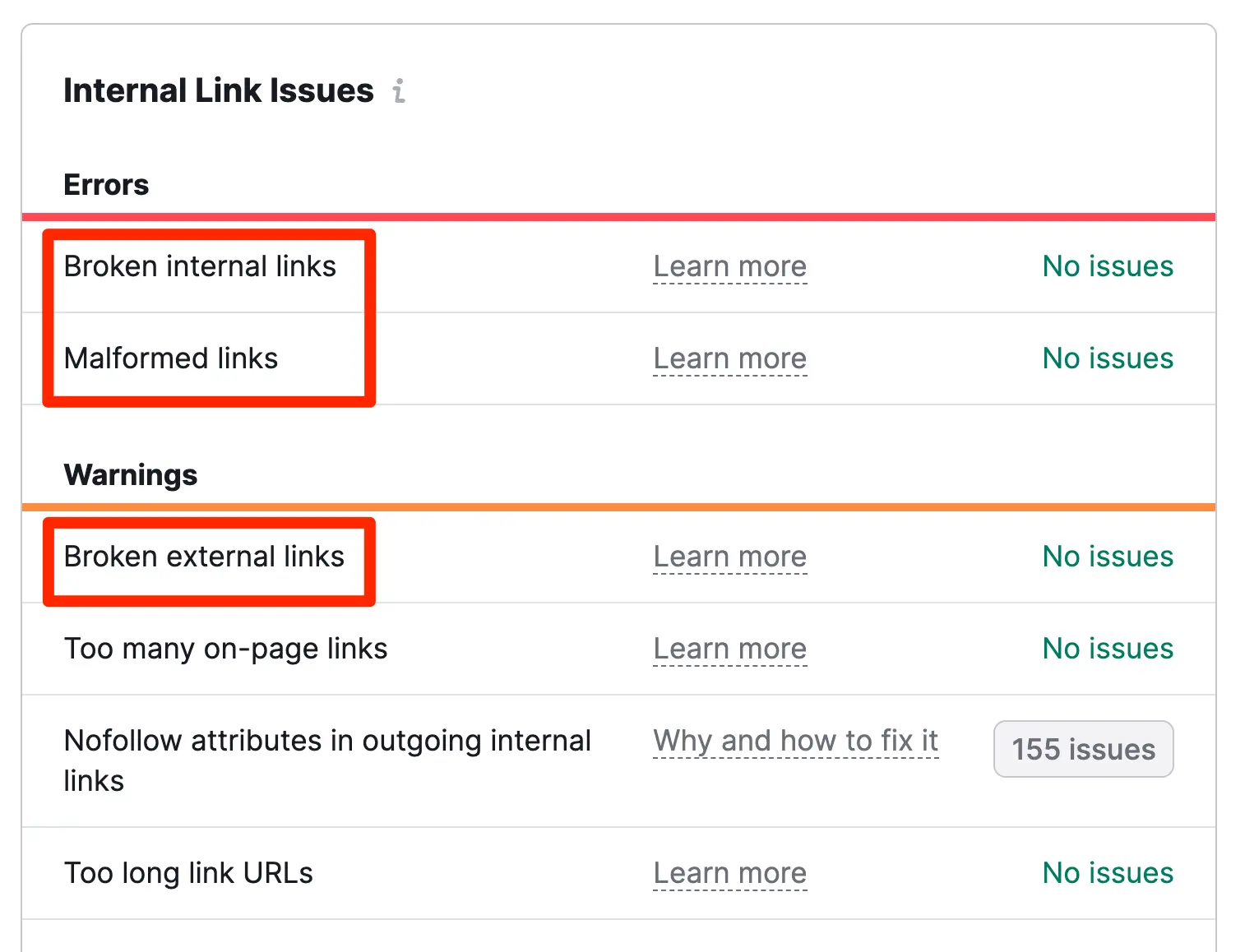
How To Fix Internal Broken Links
Broken links usually occur because the hyperlink might be wrong or the linked page is no longer available.
First, check that the hyperlink is correct. In many cases, extra spaces or characters in the URL might break the link.
If the link is correct but leads to a Not Found (404) message, change the link to point to another page on your website or add a 301 redirect to the correct page. This ensures that users and search engines are directed to a relevant and working page instead of encountering a 404 error.
To set up a 301 redirect, you can use a plugin (like Yoast SEO on WordPress) or edit your .htaccess file. You can learn more about 301 redirects here.
2. How To Find And Fix Outbound Links
You can use the free broken link checker from Aherfs to find links on your website that point to invalid or not found (404) pages. Once you enter your domain, you'll get a nice report that shows your outbound and inbound broken links.
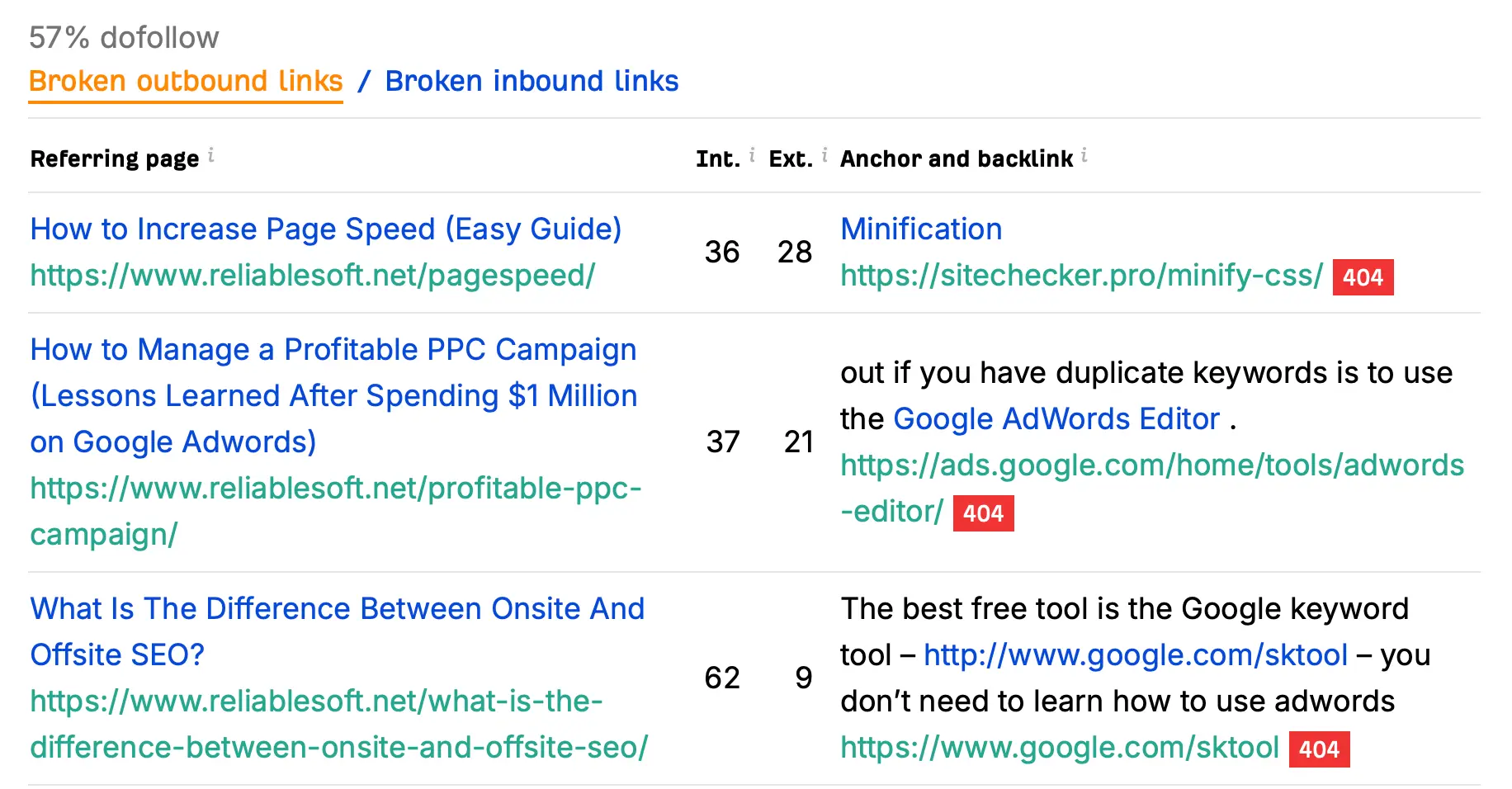
How To Fix Outbound Broken Links
To fix outbound broken links, you have only two options: remove the link or change it to point to a valid page.
It's always a good practice to test a URL in the browser to ensure that the page loads without issues before adding it as an external link.
3. How To Find And Fix Inbound Links
Inbound links, also called backlinks, are links pointing from other domains to pages on your site.
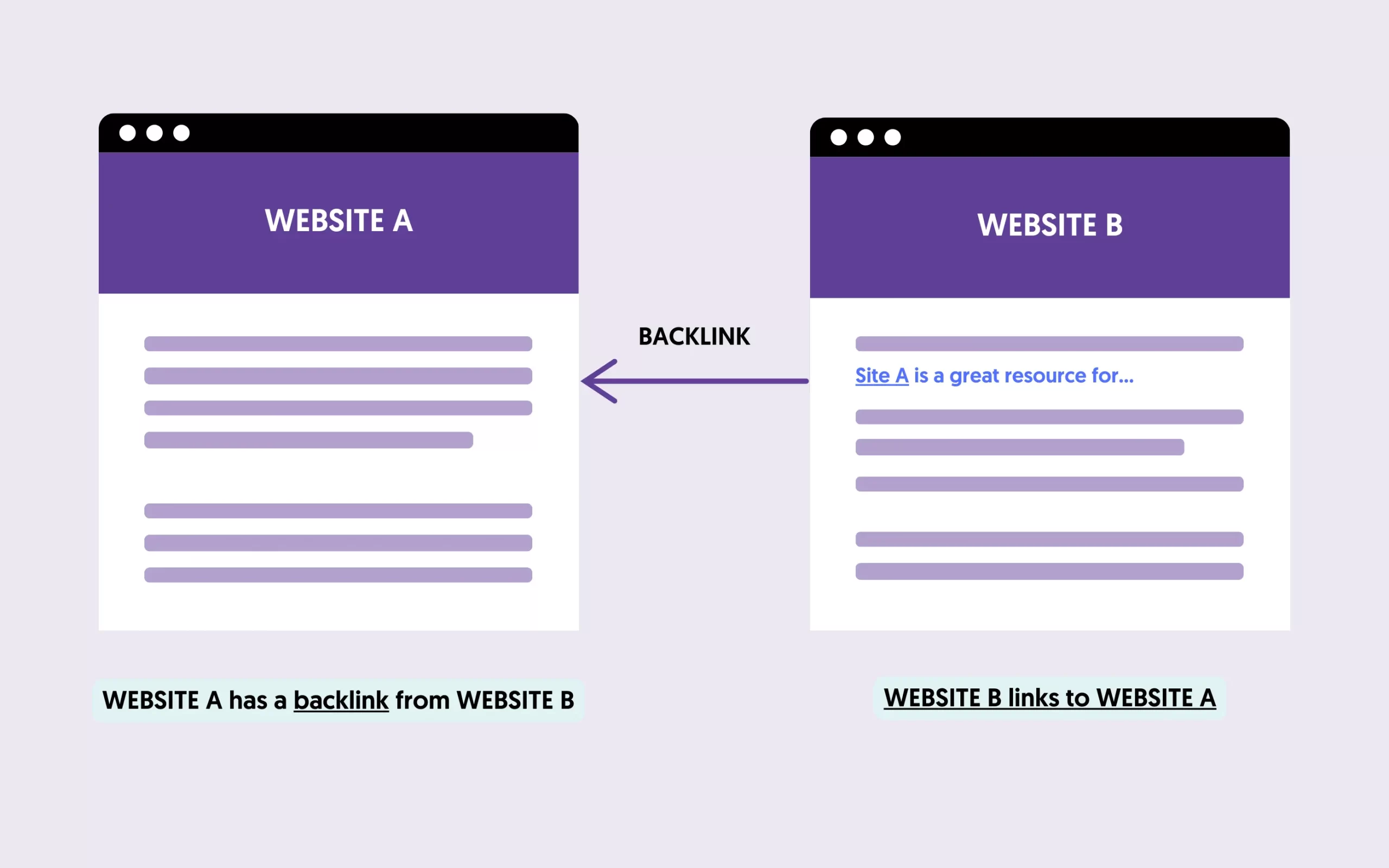
Inbound links from high-quality and relevant websites are good for SEO and can influence your ranking positions and visibility in the search results.
To find incoming links that point to a not found (404) page on your website, you can use a paid tool like Semrush Backlink Analytics.
By entering your domain and running a backlink analysis report, you can see which pages on your website have backlinks from other sites but return a 404 page.
Here is an example of what the report looks like.
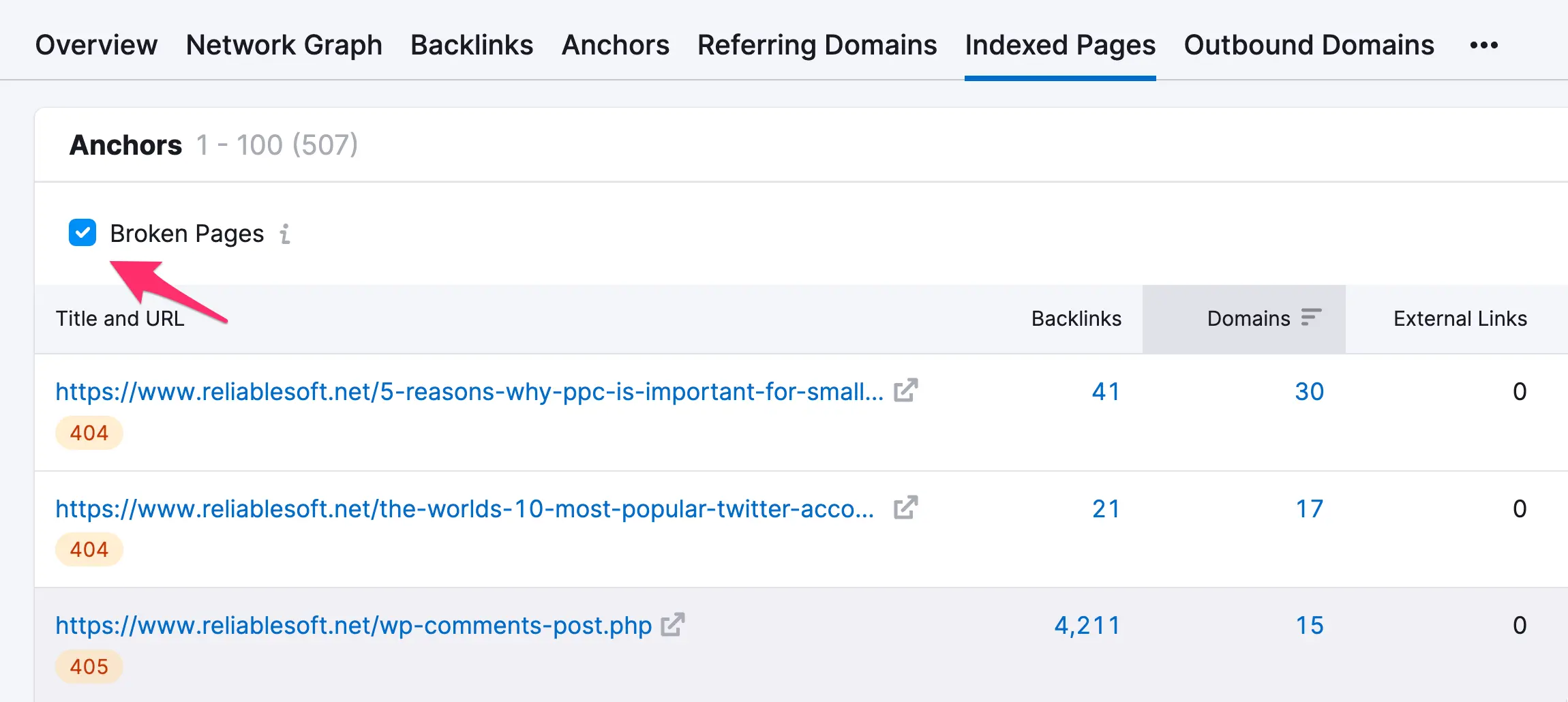
Enabling the "Broken Pages" filter makes it easy to spot broken backlinks. Clicking on the "Backlinks" column shows you details of the links.
How To Fix Broken Backlinks
The first thing to understand is that the Semrush report (and similar reports from other tools) don't follow any 301 redirection rules, meaning that they show more broken links than they actually are.
For example, in the screenshot above, the post "5 reasons why PPC is important for small businesses" is shown as a broken link, but if you click on the link, the page is redirected with a 301 redirection to the new version of the post.
Google evaluates incoming links to a page, considering 301 redirects and 'transfers' any links to the new page.
So, for Google SEO purposes, there is no issue since 'link juice' from the 41 incoming links is credited to the new page.
What you should do, is open all the links that are listed as 404 and find out which ones are actually leading to a 404 Page.
Since you have no control over fixing the links in the source domain, the easiest way to fix incoming backlinks is to add a 301 redirect to a valid page on your site.
Consider this example:
Some domains link to this category on my site: https://www.reliablesoft.net/category/search-engine-optimization/, which doesn't exist.
If I want to fix the links and take advantage of the backlinks pointing to that page, I must add a 301 redirection and redirect users and crawlers to a closely relevant page on my site. In this case, is the SEO category (https://www.reliablesoft.net/articles/seo/).
I can do this by adding this rule in the .htaccess file in the root directory of my site:
Redirect 301 /category/search-engine-optimization/ https://www.reliablesoft.net/articles/seo/
This will tell search engine crawlers that the page no longer exists and the new URL replaces it. Any links pointing to the broken page will eventually transfer to the new page.
Also, users who type the URL in their browser will view the new page.
Other ways to fix broken backlinks
Besides adding a redirection, other ways to find broken backlinks include:
Reach out: Contact the website owner and ask them to change the link. Be polite, and explain why it's better for the user experience if they link to the new page.
Bring back the deleted page: If you deleted a page and then noticed that it has links from other websites that you consider valuable for your site, you can add the page back. You can restore the content from your backups or create new content. What is important is for the page URL to match the links.
Do nothing: Having broken links on your website and links that lead to a 404 page is perfectly fine. Sometimes, there are valid reasons why you might want to delete a page and drop all backlinks, so you have nothing to worry about.
Learn More About Links And SEO
To learn more about SEO and managing links, consider enrolling in The Complete SEO Course. Our comprehensive course will teach you how to deal with technical SEO issues to optimize your website for the best possible results.



